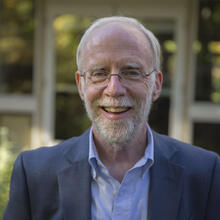Cambridge, MA. The semester is rolling along. Harvard, a particularly busy university, has a constant flow of speakers and events. In my small corner of the university, the Divinity School and more specifically the Center for the Study of World Religions, we have had some very interesting speakers. I will just mention our semester’s opening panel, and then mention three recent lectures, and give you a link to their lectures.
On September 13 – a while ago now! – our opening CSWR event of the year was a panel discussion on the topic, “Body and Soul in the Study of Religion,” with reflections by four members of the HDS community: Mara Block, doctoral candidate of theology and ethics; Michael Jackson, an anthropologist and expert on West African religions, and Visiting Professor of World Religions; Ahmed Ragab, Richard T. Watson Assistant Professor of Science and Religion, and scholar of Islamic medical traditions; and Mayra Rivera Rivera, Assistant Professor of Theology and Latina/o Studies. This stimulating panel introduced ways of thinking about what “body” and “soul” mean in today’s academic world, and how our contemporary fascination with body and material culture can also open up issues of profound spiritual meaning. You can find the panel here.
September 26, meditative education: Thomas Coburn is President Emeritus of Naropa University, the Buddhist institution of higher education in Boulder, Colorado, and currently Visiting Scholar at Brown University. He had done his doctoral studies here at Harvard, and for decades taught at St. Lawrence University in New York. On September 26 he delivered the first in this year’s lecture series, "The Intellectual Worlds of Meditation." It was a deeply reflective presentation, by a lifelong teacher, on the contemplative dimension of teaching and learning, reminding us that meditation and learning are only artificially separated. You can find the lecture here.
October 17, a Jewish reading of a famous Gospel incident: Amy-Jill Levine delivered this year's Comparative Theology Lecture. She is University Professor of New Testament and Jewish Studies, and Professor of Jewish Studies at Vanderbilt University Divinity School and College of Arts and Sciences. She is well known for the recent Jewish Annotated New Testament, which meticulously goes through the New Testament, reading from the Jewish perspective, pointing out both the texts that we can all share, and texts that do, and often have for a long time, puzzled or disturbed Jewish readers. Her lecture for us, “From Donation to Diatribe: How Anti-Jewish Interpretation Cashes Out,” explores the incident of the “Widow’s Mite” (Luke 21.1-4), where Jesus praises the poor widow who, in giving two coins, put “her whole life” into the temple collection. Though a beautiful scene, in many a Christian reading it also casts a shadow over the temple and its wealth, contrast her with the majority of pious Jewis, and perhaps unfairly derogates those who gave more generously. You can find the lecture here.
October 25, a challenge to think about how open-minded and inclusive our interfaith conversations are (or aren’t): Eboo Patel, founder of the Interfaith Youth Corps, gave our annual Greeley Lecture for Social Justice, “New Rooms in the House of Religious Pluralism: Evangelicals and the Interfaith Movement.” Well known for his inspiring interfaith work and success in initiating and enhancing interfaith learning and dialogue on high school and college campuses, Dr Patel appropriately enough challenged the Harvard audience to ask how inclusive we really are, when interfaith work tends to flourish among more liberal Christians, often to the exclusion of churches like the evangelical communities. His lecture pushes us to think about widening further our conversations, lest interfaith conversation and cooperation be “just” a liberal preserve. You can find the lecture here.
Take a look at some or all of these lectures when you have a chance. The speakers are invariably quite eloquent, and they give us much to think about: “interfaith learning” opens up a wide variety of possibilities that are boht challenging and inspiring.






